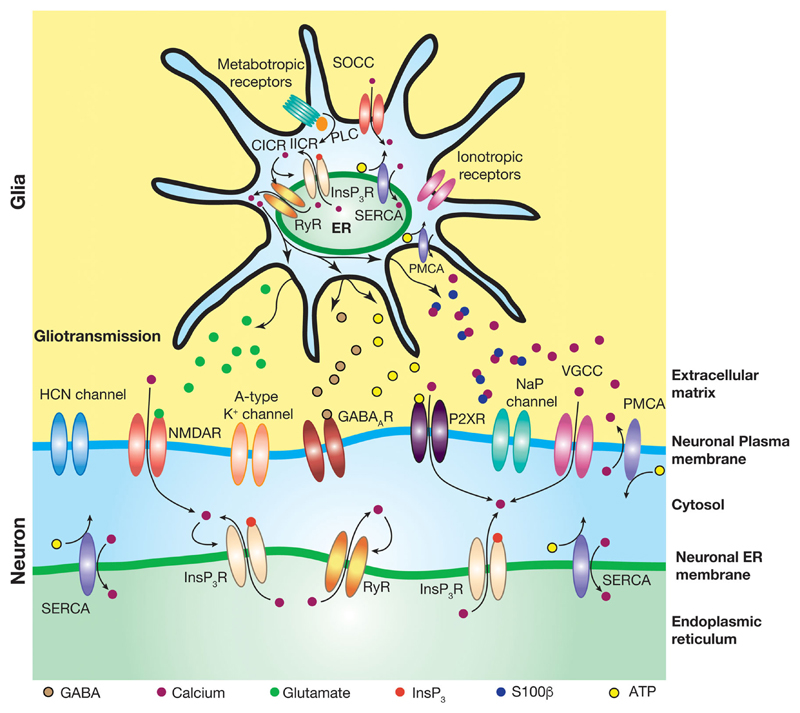Fig. 2.
Multifarious interactions between active glial signaling and active dendritic components. The roles of different gliotransmitters and their neuronal receptors have been studied across various systems and different brain regions. Gliotransmission of different transmitter molecules activate associated receptors on the postsynaptic neuronal membranes. The impact of gliotransmission on dendritic membrane is regulated by the presence of voltage-gated channels (e.g., HCN and A-type potassium) on the dendritic membrane. Glial release of S100β reduces extracellular free calcium by binding to them, thereby reducing the suppression (by extracellular free calcium) of persistent sodium (NaP) channels on the neuronal membrane. Pumps and transporters present on the glial and dendritic plasma membranes also contribute to the regulation of extracellular ionic concentration and homeostasis. Ionotropic and metabotropic receptors on the glia can be activated by neurotransmission and those on neurons can be activated by gliotransmission, forming another form of interaction between glial and dendritic structures. Store-operated calcium channels have been shown to be present on neuronal and glial plasma membranes. IICR, InsP3-induced calcium release; CICR, calcium-induced calcium release; PLC. phospholipase C; SOCC, store-operated calcium channels; PMCA, plasma membrane calcium extrusion pump; NaP channels, persistent Na+ channels; GABAAR, γ-aminobutyric acid receptor type A; P2XR, purinergic P2X receptor; RyR, ryanodine receptor

